For making any restaurant business successful, a lot of components ranging from management, décor, staff, food, location, etc, play a significant role. Still, one of the most critical aspects of making a restaurant successful is the restaurant floor plan.
Business plans of restaurant owners are more likely to succeed if the floor plans follow the restaurant design standards and guidelines. Creating a restaurant design and floor plan involves knowing every anthropometric viability, that is, the space required for human sitting and movement, the area you have, and making optimum utilization of the space, keeping in mind the requirements of your restaurant business.
The primary motive of a restaurant’s floor plan is to organize the available space for the requirement of furniture in the restaurant in the most efficient way.
The fundamental component of any restaurant interior is the chair and the table. For example, a restaurant that encourages the rapid turnover of customers will typically provide a smaller tabletop and chair. On the other hand, restaurants that encourage limited turnover and emphasize the wining and dining experience will usually offer larger table top sizes and more comfortable chairs.
For this, the Restaurant Design and the restaurant interior design need to be in total sync with each other. In this article, we will be focusing on how to design a Restaurant Floor Plan that makes full use of the area available.
2. What Is A Restaurant Floor Plan?
A restaurant floor plan shows the whole layout of your establishment. It depicts the interaction and distance between rooms, tables, service and waiting areas, payment stations, and other elements. They also feature the location of fixtures such as water heaters, doors, electrical outlets, and furnaces.
Ideally, your restaurant floor plan should include:
- The kitchen
- Space for kitchen equipment like refrigerators and stoves
- Tables and chairs
- The entrance
- The waiting area
- The bar area
- The washrooms
- Your staff area
- Outdoor seating
- Your restaurant POS system and payment systems
- Windows and doors
- Emergency exits
Furthermore, the most important thing to consider when planning your restaurant floor plan is that your layout must allow for the flow of numerous elements throughout your restaurant. You must consider the following points when designing your ultimate restaurant layout:
- Circulation and egress: This is the movement of the people, how the staff and the customers can move around and enter and exit the restaurant.
- Methods of service (self or monitored): The restaurant design will very much depend on whether the staff would serve the food or if it is a self-service restaurant.
- The overall dimension of the given space: The restaurant design heavily depends upon the whole proportion and area available. Based on this, the architect would draft the restaurant design and create a floor plan.
There is no one proper way to design a restaurant floor plan since one size never fits everyone. But all restaurateurs have one purpose in common: to delight guests.
3. Why Do Restaurants Need A Floor Plan?
A restaurant floor plan plays an important role in a restaurant’s operations and workflow. It functions similarly to a map; once your restaurant is open, the floor plan assists personnel in orienting themselves and understanding the restaurant space.
Moreover, a floor plan may be mandatory in some locations to obtain necessary approvals before operating your restaurant.
The best restaurant floor plans promote operational efficiency while also communicating your brand to guests. Your specific restaurant layout will vary depending on the sort of restaurant, but a 40/60 split between the kitchen and dining room is the industry norm.
4. Who Designs A Restaurant Floor Plan?
A professional architect and interior designer with experience working in restaurants is usually a good idea. Your restaurant floor plan must comply with construction norms and regulations; specialists who are already familiar with the rules are less likely to make costly mistakes.
An architect is qualified to ensure that a restaurant is structurally sound and code-compliant. They would be able to come up with the spatial configurations and draw up the floor plans. This ensures the restaurant layout is safe with the most pleasant ambience.
Plus, the architect will be the one dealing with where and how to build a wall, design a staircase, and structure and collaborate with various elements and principles of design.
Or, you can create a customized floor plan by using restaurant floor planning software such as SmartDraw, ConceptDraw, or CadPro.
5. Features Of An Efficient Restaurant Design And Floor Plan
The space requirements for the restaurant design must always be kept in mind. Below are a few of the essential features that one should keep in mind to make any restaurant design and floor plan efficient.
5.1. Human Comfort
Human comfort in an indoor space primarily relies on thermal comfort and indoor air quality (achieved by temperature, humidity control good and ventilation), lighting, and acoustic comfort. Apart from these, the floor plan must be such that space available for design should be able to provide each customer with comfortable personal space. There must be enough space in the design to sit, stand, walk in, and walk out comfortably.
5.2. Thermal Comfort And Indoor Air Quality
The internal heat gains are very high in all restaurants (especially in kitchens) due to cooking, lighting, electrical equipment, and the number of clients. HVAC (heating ventilation and air conditioning) forms an important feature and consideration for achieving a functional restaurant design.
5.3. Lighting
Lighting Design aims to enable the occupant to work and move around in safety. It provides for our visual needs, and also safety and security. People intuitively know that light affects their mood. The challenge while designing lighting is to understand under what circumstances certain visual conditions might be better than others and to use that knowledge to create lighting systems that improve overall performance and human comfort. Light in restaurants can be divided into three categories- Ambient, Accent, and Mood Lighting.
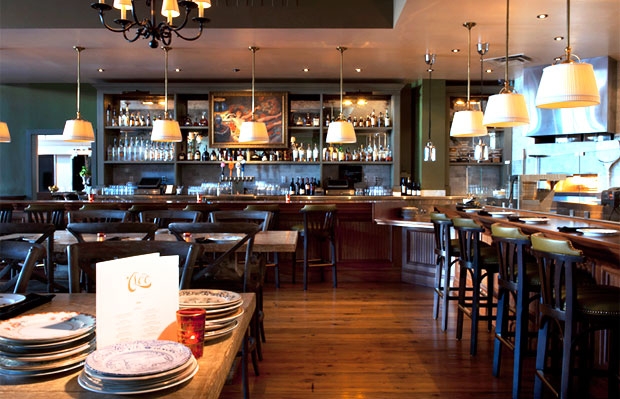
While Ambient lighting is used for normal functions, accent lighting is focused on a particular area. Mood lighting is for the aesthetic, and it is the combination of these three that define light in restaurant design. In restaurant interior design psychology, lighting is considered an essential factor, and the restaurant design focuses on the function and psychological impact of various lights. The floor plan must be designed in cahoots with the overall effect and placing of each of these light elements.
Restaurant interior colors also play an essential role in the comfort and perception of the customers. Read how interior restaurant colors impact customers’ food choices here.
5.4. Acoustic
People are talking, background noise or sound, and the architectural design of the restaurant itself affects the overall acoustical quality of the space. The variety of ambient music in a restaurant straightaway regulates the user experience and, ultimately, the feedback. The average noise level of a typical restaurant during a dining rush is 80 dB (some reach as much as 110 dB).
Restaurants traditionally have carpeted floors and soft furnishings and upholstered chairs, tablecloths, and curtains which provide sound-absorbing qualities. Recent trends lean towards a modern look, which generally includes high ceilings and hard surfaces; though these features are aesthetically pleasing, they are known to produce excessive room echo.
As these venues are usually fast-paced and crowded, this makes for an uncomfortably loud environment. A study shows that more booming bars increase the amount and pace of alcohol consumed. Still, for a restaurant, a balance needs to be created concerning aesthetics and desired acoustical levels for ultimate human comfort.
5.5. Optimum Utilization Of Seating And Smooth Circulation
The space design plan should be made in such a way that it allows the servers to move quickly with food and beverages in the restaurant and also allows the guests to move in and out of the restaurant freely. Floor plans should also provide customers with enough elbow room.
The areas for specific functions need to be decided in such a way that the seating space is maximized without compromising the customers’ level of comfort. Allocating enough space to work comfortably and efficiently in each area is essential. Your restaurant floor layout should focus on the comfort and enjoyment of your customers while maintaining an efficient circulation pattern.
5.6. Safety Concerns
Restaurant design standards require that there should be sufficient space between tables. For instance, if there’s an emergency, and you need to evacuate the building, having clear pathways to the exits is an integral part of keeping everyone safe. Full paths should be built to avoid employees and guests alike tripping and hurting themselves as they navigate your dining room.
6. Basic Requirements For Restaurant Design And Floor Plan
Although specific layouts vary according to the type and size of the restaurant, most floor plans include similar components. The spatial arrangement within the floor plan should be in such a way that there are two primary functional spaces. These are “the front of the house”- constituting the entrance, waiting for the lobby, POS, Dining area, Bar/Lounge are well connected to “the back of the house”- representing the kitchen, pantry, storage, service entry, and administration areas.
The designer needs to find a balance between connectivity and privacy in this area. It is essential to understand that the back of the house and its functioning needs to be hidden from the customers. This is one of the most critical parts of a restaurant design plan.
6.1. The Entrance
The entrance of your restaurant casts the first impression of your restaurant on the customer. The entry gives a preview of the type of space a patron is going to enter. A well-designed restaurant design plan should ideally provide ample space that is welcoming and should evoke curiosity in the customer to come in and dine. The act of entering can be signified in more subtle ways than just puncturing a hole in the wall.
The entry can be an elaborate one that emphasizes the opening or can bring forth the theme of the restaurant. For example, a Greek-style idea would have an elaborated and articulated gateway, rough-worn distressed wooden furniture at the front desk, white and navy/sky blue color paint for the walls, and new Greek-style light fixtures.
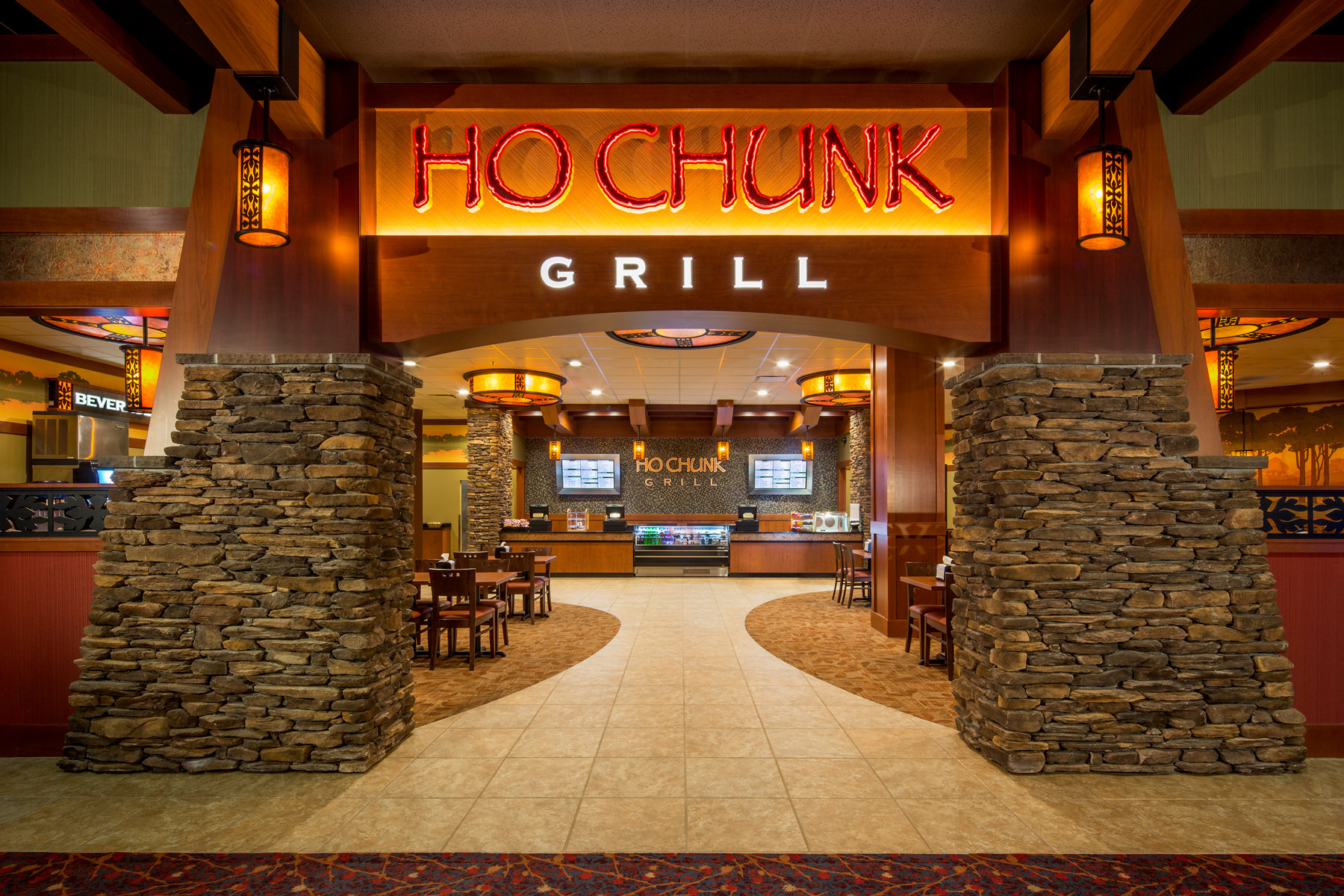
Your Restaurant Entrance should be:
- Able to draw people in and make them feel immediately comfortable.
- Well maintained & easy to open.
- It is inviting and welcoming.
While evaluating your entrance, focus on these components:
- Does the design allow staff to greet people well?
- Does the entrance make customers feel welcome?
- Does it allow a free-flowing circulation for customers as well as the staff?
6.2. Dining Room Layouts
The dining area of a restaurant is the soul of the place. The customer spends 98% of the time in this area. While designing the dining room layout, your primary aim should be that your customers be comfortable in the seating area and enjoy their food. The Dining Area, must ideally include the customer’s waiting area, customer takeaway counter, seating area, and POS terminals.
Your interiors in the dining area have to be designed depending on the concept and the theme of your restaurant. This, of course, would also depend on the space available and the theme of the restaurant. Your dining area setting should be in sync with the theme of your restaurant.
a) Seating Area
The seating area should be designed with at least three sizes of tables with the motive to accommodate small, medium, and large parties accordingly. The window area space can be used for small two-person tables. Similarly, the middle section can be best utilized for accommodating larger parties. Between every dining table, there should be a standard of 3-4 ft to avoid any chaos and disturbance. There should be ample space that allows for the free and seamless movement of the servers.
b) Waiting Area
The waiting area is often overlooked while creating restaurant designs. Disregarding this area results in diners waiting for the table. There should be enough space for guests where they could wait for dining.
c) POS terminals or Billing System Area
The POS system should be positioned at a place that will maximize efficiency. There should be a minimization of the staff running back and forth between the payment stations.
Your restaurant design should be structured to get as many tables as you can into your dining room. The number of tables could greatly affect how many tables turn (and checks) you have in a shift.
6.3. The Kitchen
One of the most important components of your Restaurant Design and Floor Plan is your Kitchen Area. The kitchen is designed primarily by taking into consideration the views of the Head chef, kitchen consultant, architect, and contracting firm representative.
The kitchen consultant is responsible for the design and usually providing the kitchen items like Stainless steel units, suitable chimneys, freezing units, and others. The electrical and plumbing services are provided by the contracting firm with a consultation of the kitchen consultant and the architect. A well-laid-out kitchen will make your staff happy and more efficient in their work.
Include The Following Aspects In Your Restaurant Kitchen Design Plan
The kitchen design of the restaurant design and floor plan should ideally have the following aspects:
- Specific kitchen working zones- Specific kitchen working zones should be defined in the kitchen floor plan. Namely, pre-preparation area, food assembly and packing, and washing area.
- Designated spaces- The kitchen and food storage areas include designated spaces for cooking equipment, food preparation, and dishwashing, as well as cold and dry food storage.
- The moving area in the kitchen- The layout shall be made in such a way that allows the kitchen staff to move in quickly, swiftly, and efficiently. Providing enough space is critical to avoid accidents as well.
- Proper ventilation– Ensure adequate ventilation in your restaurant kitchen as it is necessary for the health of your restaurant staff and also reduces the chances of the various items being prepared in the kitchen waft to the dining area.
- Employees restrooms: You may also choose to include an office, employee bathrooms, or a break room in the back of the house.
Allocating Adequate Space For Different Areas In The Kitchen
An efficient Restaurant kitchen floor plan shall include adequate space for receiving and storing goods, inventory, water closet, prep areas, cooking stations, food storage, water closet, dishwashing zone, inventory, equipment. It is suggested that equipment with similar functions should be stored together, and after their use, they should be kept in their proper place.
Kitchen Cooking Area
This is one of the most critical zones of the kitchen area, where the actual food preparation will take place. All the equipment like burners, oven, grills, tandoor and other equipment needed for the operations pre-decided will have to be positioned in this area.
Prep Area
This is the area where most of your kitchen prep happens. The prep area needs to be well equipped to accommodate all the ingredients required for the preparation of the food.
Storage Area
The storage area should be well equipped to store all the dry goods that are mostly bought in bulk, such as rice, flour, sugar, lentils, oils, whole spices, and spice powders. This space shall be designed and maintained so that it is moisture-free and free of pests and rodents. The store area is generally designed adjacent to the kitchen. It serves as a facility storage facility for both the kitchen and dining items of the restaurant.
Cold Storage
Another crucial element of the kitchen design is the cold storage area. There is a continuous need for cold rooms, deep freezers, and perishables to stock perishables like meat, seafood, and frozen food. The facilities that you would need in your cold storage will depend on the quantity the restaurant handles. The maintenance of cold storage also needs to be done.
Washing Area
The washing area in the restaurant should be allotted the maximum space for the workflow to be smooth. The washing space should be equipped to accommodate washing of large cooking vessels, cutlery, crockery, and other utensils. There should also be a space where the used cutlery, crockery, utensils would be kept for washing.
Pantry Area
A pantry is a room or a ready to serve area where beverages, food, and sometimes dishes and others as decided by the head chef.
Staff Personal Area
There should be a space for a staff toilet. A small area can also be created for staff where they could change their uniforms and keep their personal belongings or things they would need for their use.
6.4. Restrooms
It is undisputed that the restaurant owners need to pay ample attention to the food and services offered by them, but at the same time, the cleanliness of the restaurant, especially the restrooms, forms an integral part of the customer’s dining experience. The toilets should ideally be divided into male and female sections. Give special attention to this area as it is usually ignored in the restaurant planning and design stage.
Restrooms leave a lasting impression on the mind of the customer. They should have sufficient lighting and easy to clean and maintain. Every customer will appreciate sparkling, clean, and large enough restrooms to accommodate multiple guests.
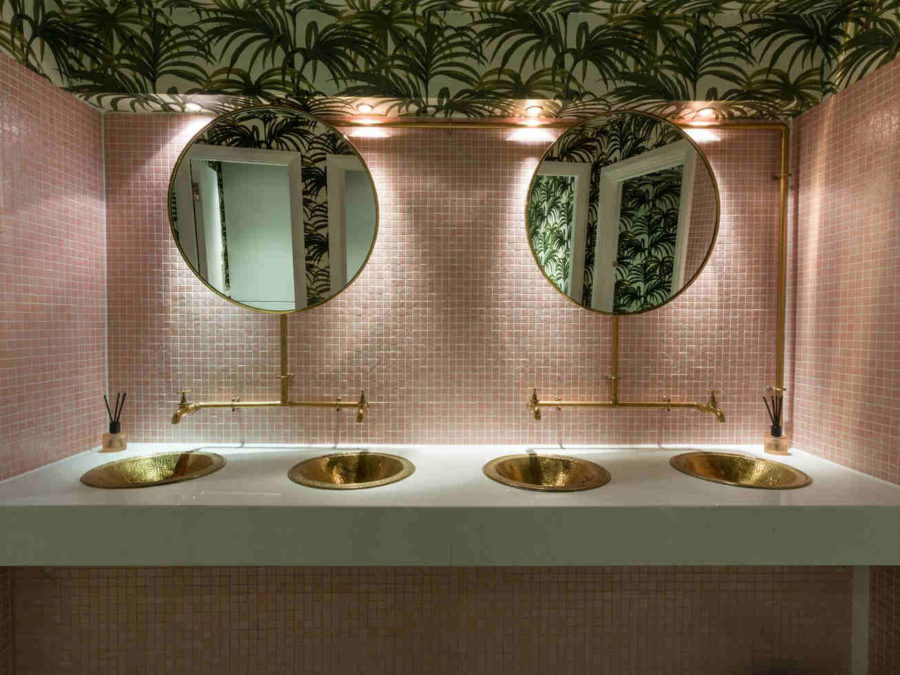
While Designing The Restrooms Area, Keep The Following Points In Mind
- The restrooms should be easy to access for the customers without unnecessary wandering.
- It is advisable that the restrooms shall also have wheelchair access for catering to the specific needs of physically challenged customers.
- It is necessary that the restaurant restrooms should be appropriately equipped with sanitation facilities, especially trash disposal, and have proper designated space on the bathroom floor plan.
- The restrooms should also be equipped with proper lighting.
6.5. Electrical Services
The electrical part of the restaurant is a fundamental and crucial aspect of both the operations and safety of the establishment. Depending on the location, the wiring, termination, lighting fixtures, cabling need to be taken care of both professionally and diligently. Plan the site for the central control panels, Generators, etc. systematically.
Restaurant floor plans are ultimately a balancing act between various functional needs and requirements of restaurant design. Designing your restaurant floor plan might seem a little easier task as compared to financing, licensing, or construction that goes along with starting a business. But the restaurant floor plan is a critical aspect of effective restaurant design.
7. Key Considerations While Choosing a Floor Plan
Floor plans, based on what you’re working with, might vary greatly from restaurant to restaurant. Here are five important factors that you should consider while choosing the perfect floor plan for the restaurant:
7.1. Space
Like in your home, various sections in your restaurant must work independently and cooperatively. The first area to consider is your kitchen, which should take up roughly 30–40% of your available space. Furthermore, you should devote 40–60% of your area to your dining room to keep enough room for the guests. Similarly, make room for bathrooms, a bar, and so on.
7.2. Investment
A well-designed floor plan can boost a restaurant’s profit margins by allowing servers to move more quickly between the front and back of the house, serve customers more efficiently, and change tables more quickly. To ensure that your expectations are in sync with reality, you need to figure out how much of your investment you are allocating into designing a floor plan.
7.3. Safety
You want your restaurant to be a safe environment for all your employees and customers. This includes heavy details like placing emergency exits in strategic locations or ensuring the restaurant meets the occupancy needs and the little safety and compliance details like ensuring that all wiring in your restaurant is taped down, light fixtures are not too low, and so on.
7.4. Accessibility
Ensuring people with mobility problems can get to dining areas is another important thing to consider. Every type of seating you have for people who can walk around has to be the same for people who can’t move around as easily. For example, most bars are designed so that a person can comfortably stand on a high stool. To make your restaurant more accessible, you have to set up a part of the bar so that it meets the accessibility guidelines.
7.5. Traffic/Covers
Don’t underestimate the significance of what’s outside your restaurant; it could be the deciding factor in whether or not someone enters. Many restaurants are deliberately structured to attract customers to enjoy a drink at the bar or waiting area while they wait for their seats, so keep an eye out for traffic outside your restaurant.
You know your restaurant floor plan is reduced when there have been instances in your restaurant when any customer might have smacked his head with a server while passing through a tight corner, or a customer might have had to sit with a stranger to let someone else pass through the aisle way. Therefore, you should always avoid these disastrous situations by analyzing your restaurant design requirements and specific needs before finalizing the layout.


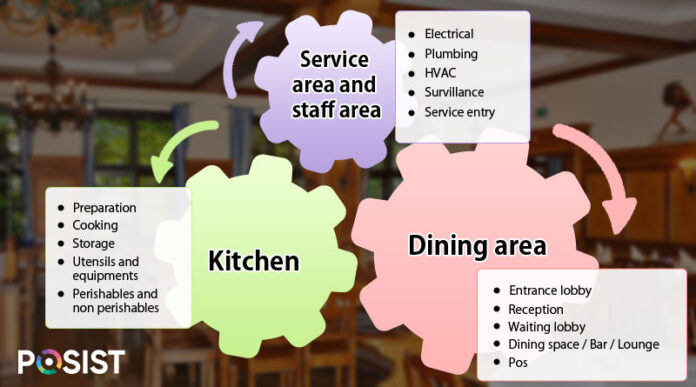













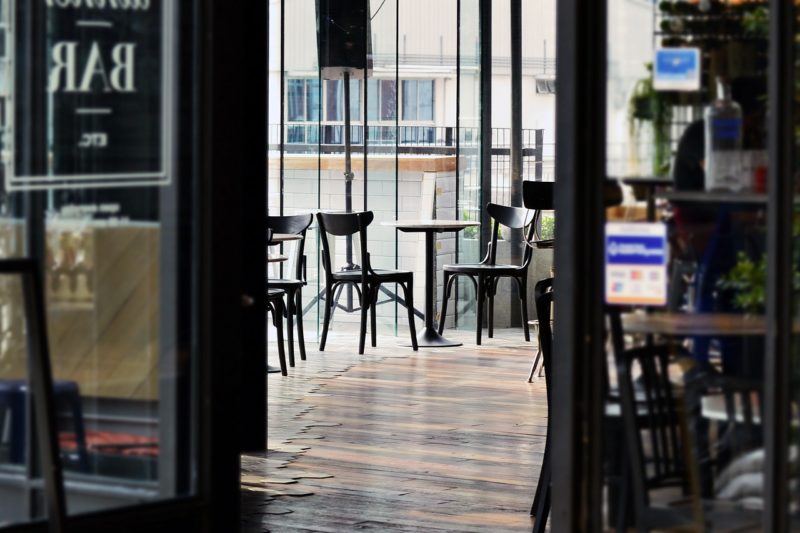


Great information on restaurant design and layout. Thanks for sharing.
Restaurant layout guidelines help you plan out your restaurant’s layout in a much better manner. This is a very informative article.
Designing a restaurant floor plan involves more than rearranging tables. Your restaurant layout both supports operational workflow and communicates your brand to patrons. Very information, impressive writing style.
A very well written and informative article. I appreciate how space division, interior, customer’s interest as well as staff comfort is exploring. Helped me a lot during my design.
Very Useful, Thank you a lot, for writing this letter <3
Nice information about Indian Hotel Kitchen & Restaurant. ?
This information is very use full and has helped me to design my resturant design
Thank you,
this information will be very useful for me in my upcoming design project